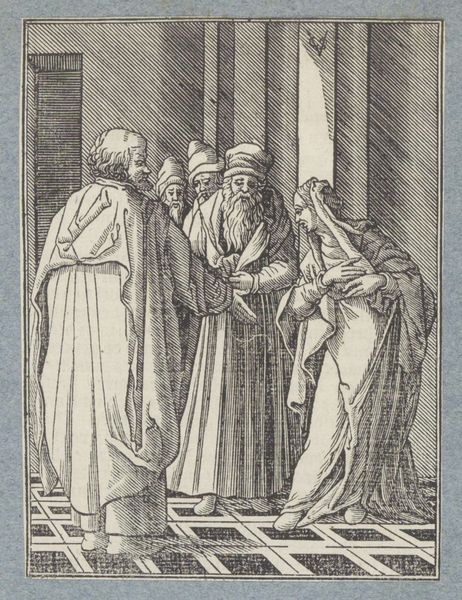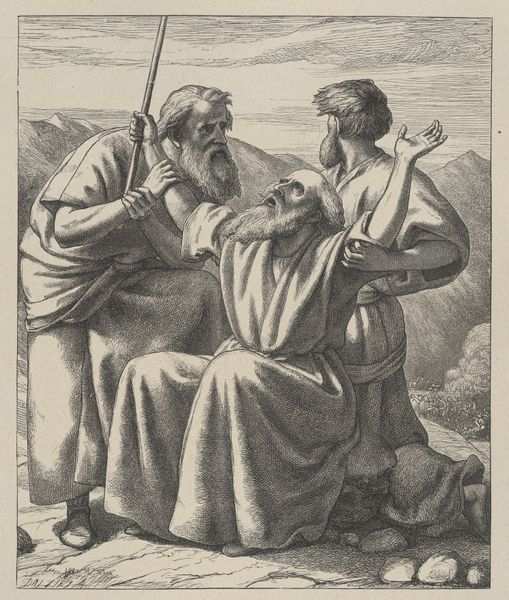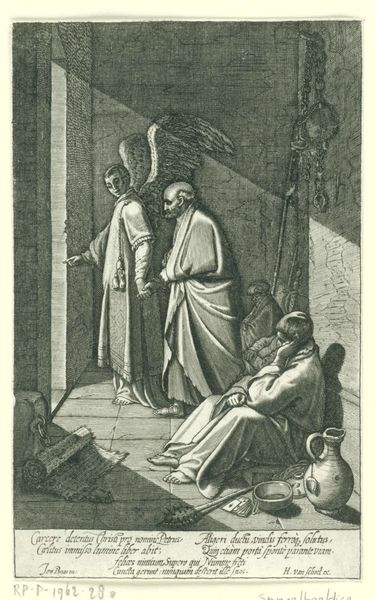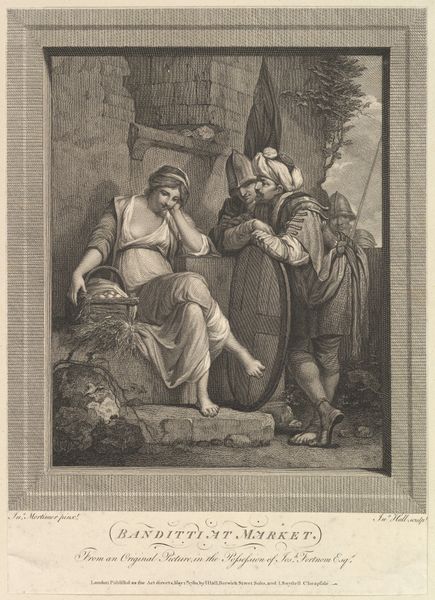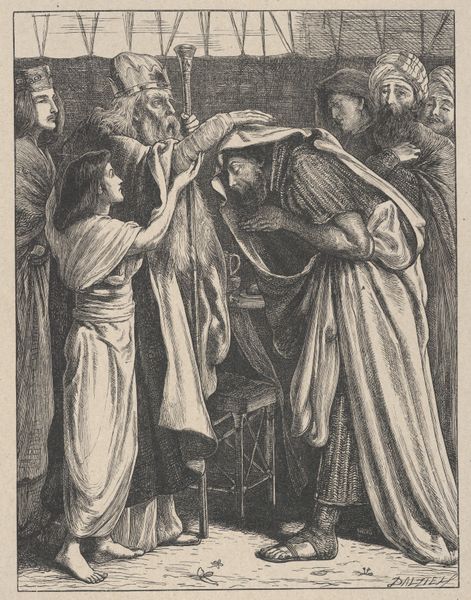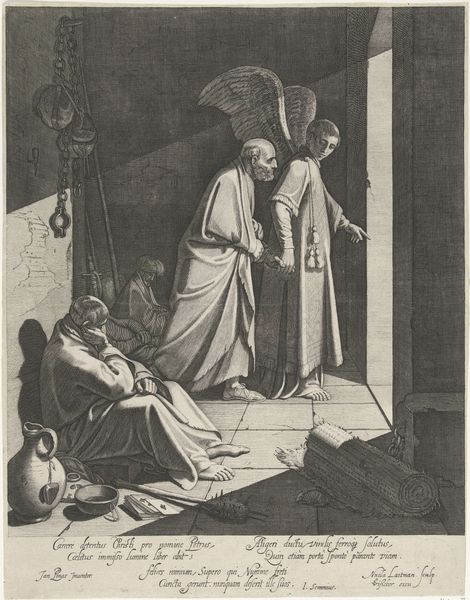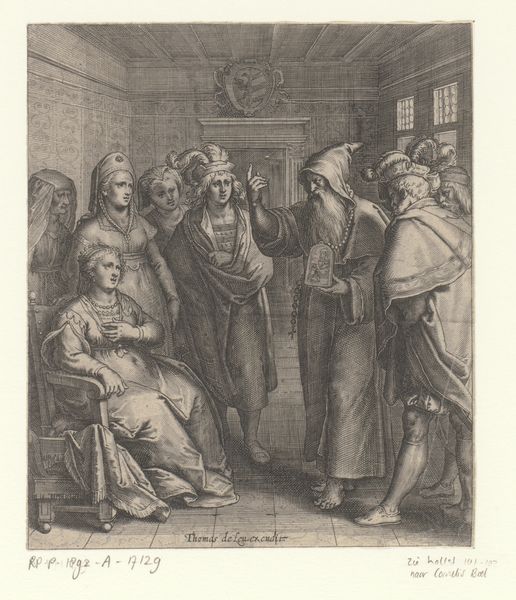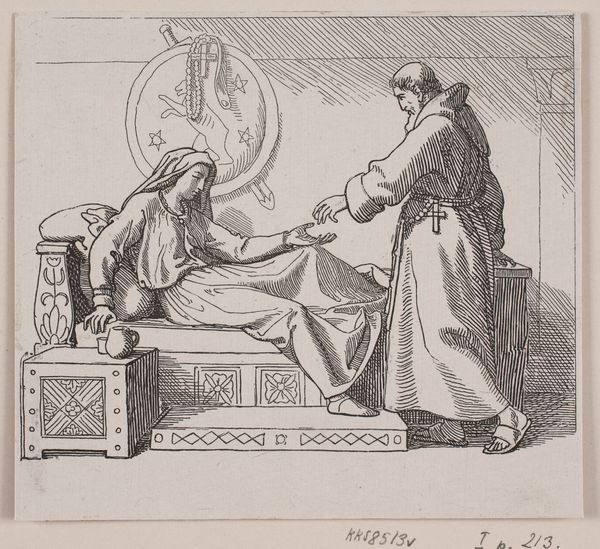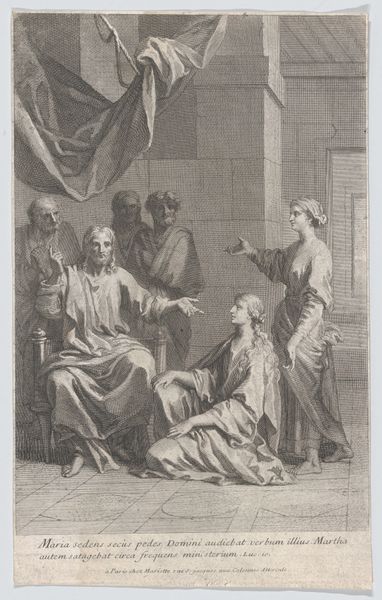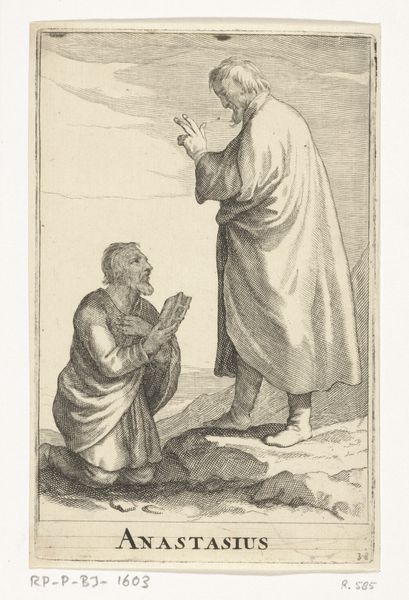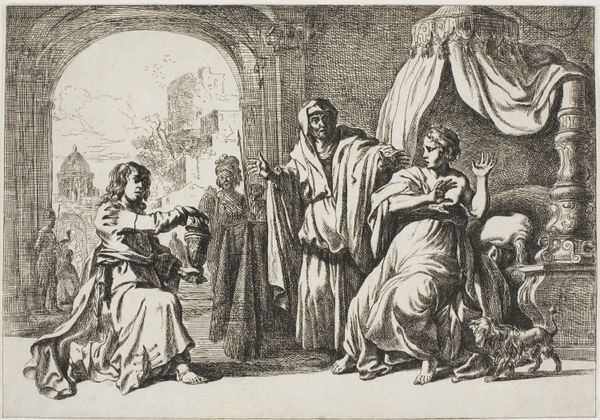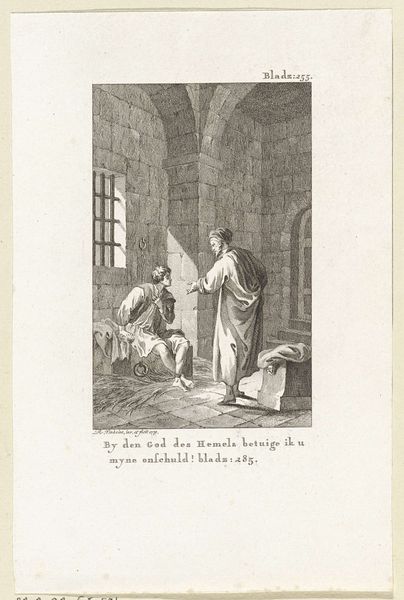
Isaac Blessing Jacob, from "Dalziels' Bible Gallery" 1880 - 1881
0:00
0:00
drawing, print, engraving
#
drawing
#
narrative-art
# print
#
figuration
#
history-painting
#
academic-art
#
engraving
#
realism
Dimensions: Image: 8 7/16 × 6 15/16 in. (21.4 × 17.7 cm) India sheet: 10 5/8 × 8 13/16 in. (27 × 22.4 cm) Mount: 16 7/16 in. × 12 15/16 in. (41.8 × 32.8 cm)
Copyright: Public Domain
Curator: This engraving, dating from 1880-1881, is called *Isaac Blessing Jacob, from “Dalziels’ Bible Gallery”*, by Edward Armitage. The piece is currently located in the Metropolitan Museum of Art. It's striking, isn't it? My first impression is how claustrophobic it feels, despite the figures occupying a domestic setting. The shading contributes a somber mood, wouldn't you agree? Editor: Absolutely. This piece visually narrates the famous biblical account in Genesis where Jacob deceptively obtains Isaac’s blessing, which should rightfully go to his brother, Esau. Consider the performance of gender in play. Rebecca actively facilitates Jacob's deception, pushing patriarchal succession forward on her own terms. Curator: And consider the wider role of these “Dalziels’ Bible Gallery” prints. These affordable images brought biblical stories to a wider 19th-century audience. The art became a crucial tool for religious education and social messaging at a time when print media boomed. Editor: Precisely. By depicting the figures in such minute detail through a medium of print, Armitage is playing into Victorian sensibilities that promote virtue but concurrently reinforce ideas around race, class, and societal hierarchy. Look how Jacob, in disguise, is physically closer to the elder Isaac; proximity equals power. Curator: It’s a dynamic portrayal for certain. While technically stunning in its execution of detail and realism within engraving, there's a stillness about the scene that perhaps reflects the irrevocable nature of the blessing, once given. This image invites contemplation, even unease, about power dynamics. Editor: The visual narrative reinforces structures, right? The deception highlights underlying anxieties regarding family succession, patriarchal power, and how identity, especially through performance, can manipulate socio-political systems. In its own way, it presents issues surrounding authority as contested. Curator: Well, Armitage certainly captured the theatricality and tension implicit in this scene. The meticulous labor put into this artwork offers many pathways for investigating the cultural preoccupations of the era, not only through social messaging but also from the means for widespread dissemination of imagery. Editor: And how subversive, maybe intentionally, the performance becomes when a matriarch interferes, setting up shop with the patriarchy!
Comments
No comments
Be the first to comment and join the conversation on the ultimate creative platform.
